Advanced Spinal Decompression Therapy for Effective Back Pain Relief
Spinal Decompression relieves pressure, reduces back pain, and restores spinal alignment for improved comfort and mobility.
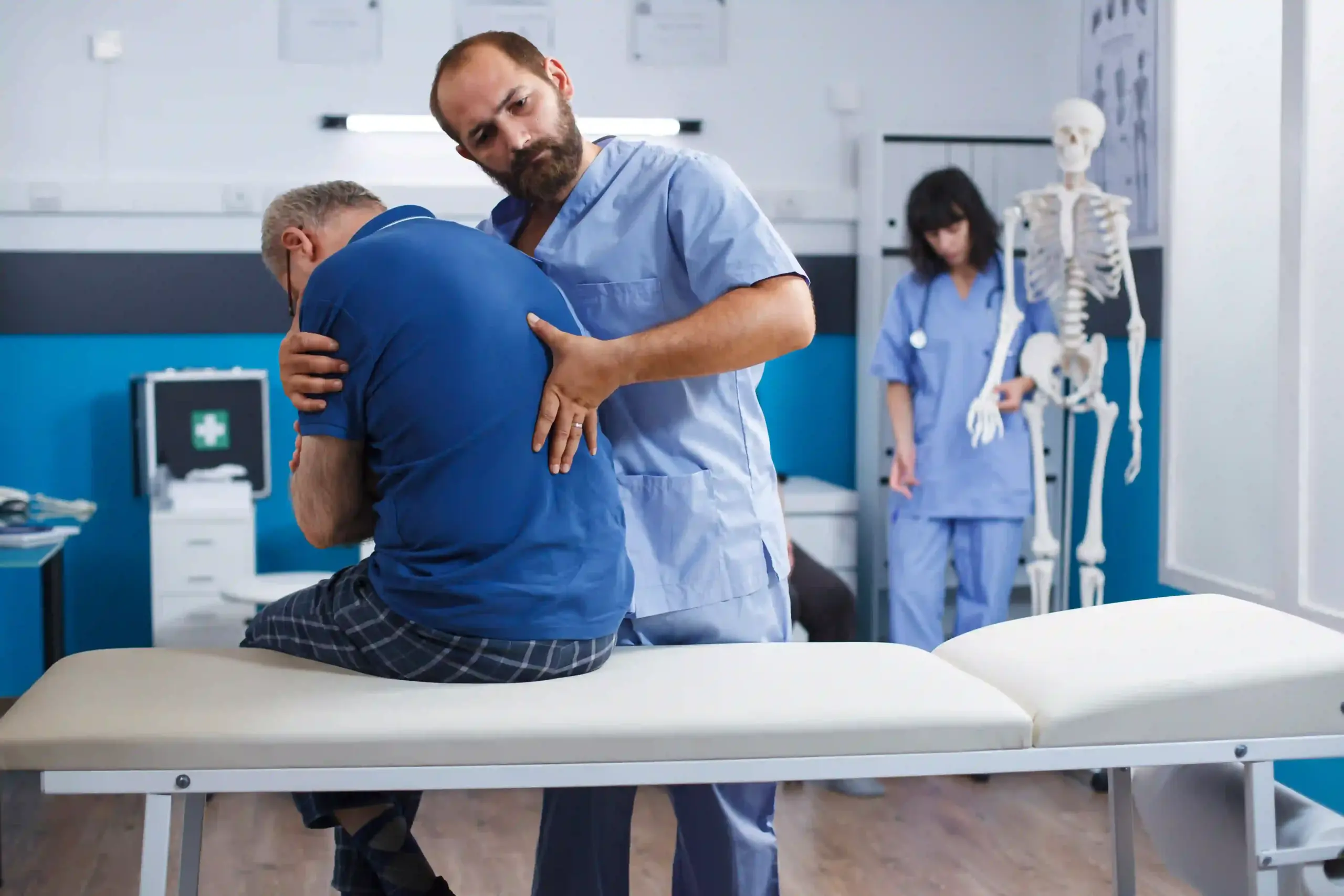
Spinal Decompression
Spinal Decompression is a therapeutic and surgical approach used to relieve pressure on the spinal cord or nerves caused by conditions like herniated discs, spinal stenosis, or degenerative disc disease. It aims to reduce pain, improve mobility, and restore spinal alignment. The treatment may involve non-surgical traction therapy or surgical options like laminectomy and discectomy. By gently expanding the spinal space, it alleviates nerve compression, enhances blood flow, and promotes healing. This procedure significantly improves the quality of life for individuals struggling with chronic back or neck pain, offering lasting relief and better spinal stability.
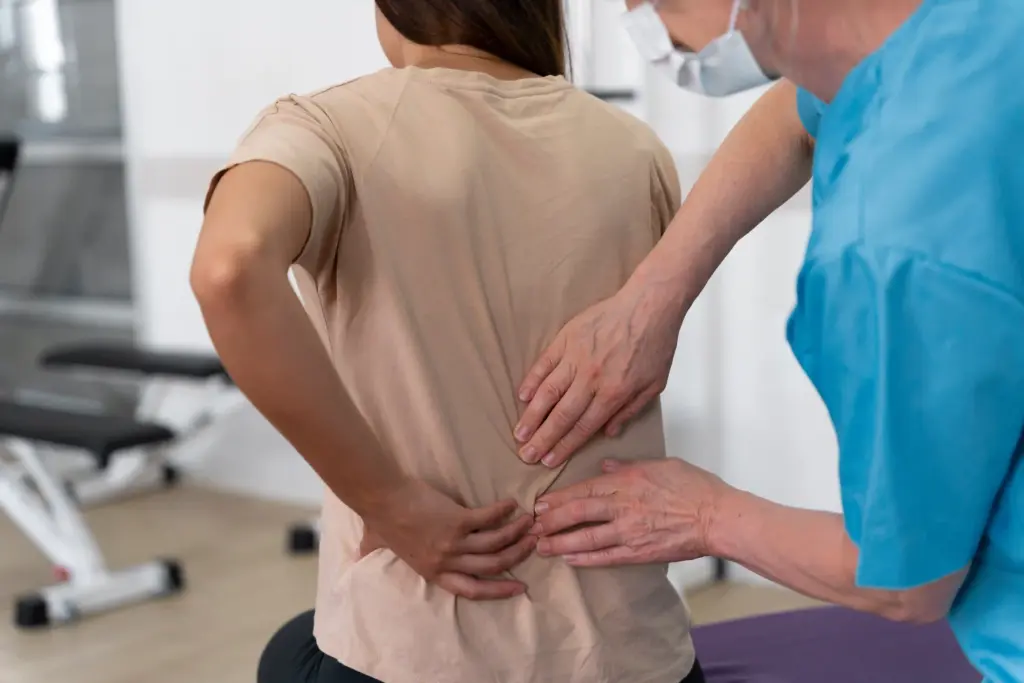
Early Detection Saves Lives
Early detection and treatment are crucial for improving the chances of survival. If you notice any concerning symptoms, consult a healthcare provider immediately.
Signs and Symptoms
Chronic Back Pain
Persistent discomfort in the lower or upper back, often worsening during physical activity.
Leg or Arm Pain
Pain radiating down the limbs, commonly known as sciatica, due to nerve compression.
Numbness or Tingling
Loss of sensation or pins-and-needles feeling in the arms, legs, or feet.
Muscle Weakness
Reduced strength in the limbs, making walking or lifting objects difficult.
Restricted Mobility
Stiffness or difficulty bending, turning, or maintaining posture for long periods.
Balance Issues
Trouble walking or maintaining coordination due to spinal nerve irritation.
Loss of Bladder or Bowel Control
Severe cases of compression can interfere with nerve signals controlling these functions.
Blood in Urine
Hematuria - pink, red, or dark urine, the most common symptom
Frequent Urination
Feeling the need to urinate frequently, even when bladder is not full
Painful Urination
Experiencing pain or burning sensation while urinating
Back or Pelvic Pain
Pain that occurs as the cancer grows and spreads
Unexplained Weight Loss
Significant weight loss not related to diet or exercise
Fatigue
Feeling unusually tired or weak without a clear cause
Meet Our Expert Spinal Decompression
Risk Factors
Smoking
Smoking is one of the leading causes of bladder cancer. Chemicals in tobacco smoke can damage the lining of the bladder, increasing the risk.

Gender
Men are at a higher risk of developing bladder cancer than women.
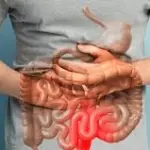
Chronic Bladder Infections or Inflammation
Conditions such as bladder infections and long-term bladder inflammation can increase the risk.
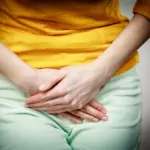
Exposure to Chemicals
Prolonged exposure to certain chemicals, especially those used in the dye industry, rubber production, and chemical manufacturing, increases the risk.

Age
Natural wear and tear on spinal discs increases the risk of compression as people age.

Degenerative Disc Disease
Breakdown of spinal discs leads to narrowing of the spinal canal.

Herniated Discs
Displaced or ruptured discs can press against the spinal nerves.
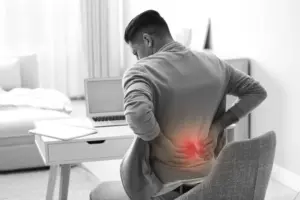
Obesity
Excess weight places extra strain on the spine, accelerating disc damage.

Sedentary Lifestyle
Poor posture and prolonged sitting weaken spinal muscles.

Previous Injuries
Trauma or fractures can misalign spinal structures.

Genetic Predisposition
Family history of spinal problems can increase vulnerability.

Smoking and Poor Nutrition
Both impair bone and disc health, leading to faster degeneration.

Spinal Decompression
Diet and Nutrition
Prevention
Diagnosis
Key Services
Key Facilities
Proper nutrition supports spinal health and speeds recovery from decompression treatments:
- Calcium and Vitamin D: Strengthen bones and reduce the risk of vertebral collapse; found in milk, leafy greens, and fortified cereals.
- Magnesium: Essential for muscle relaxation and nerve function; include nuts, seeds, and whole grains.
- Protein: Supports tissue repair and muscle strength; sources include lean meat, fish, tofu, and legumes.
- Omega-3 Fatty Acids: Reduce inflammation in spinal tissues; found in salmon, chia seeds, and walnuts.
- Vitamin C: Aids collagen formation for spinal discs and ligaments.
- Hydration: Keeps intervertebral discs supple and prevents stiffness.
- Avoid Excess Sugar and Processed Foods: These promote inflammation and slow healing.
- Regular Exercise: Strengthen core and back muscles through stretching, yoga, and swimming to maintain spinal alignment.
- Maintain Proper Posture: Sit and stand upright to reduce spinal strain.
- Weight Management: Maintaining a healthy weight prevents excess pressure on spinal discs.
- Ergonomic Work Setup: Use lumbar support and adjust chair height to reduce back stress.
- Avoid Heavy Lifting: Use correct lifting techniques or assistive tools to prevent injuries.
- Stay Active: Avoid long periods of sitting or lying down to maintain disc flexibility.
- Quit Smoking: Improves blood circulation and spine recovery capacity.
- Routine Check-Ups: Early detection of spinal problems ensures timely treatment.
Accurate diagnosis is crucial to identify the cause and extent of spinal compression:
- Medical History and Physical Examination: Assess pain location, duration, and nerve function.
- X-rays: Reveal bone abnormalities, alignment issues, or narrowed spinal spaces.
- MRI (Magnetic Resonance Imaging): Provides detailed images of soft tissues, discs, and nerves.
- CT Scan: Offers 3D visualization of the spine’s structure.
- Electromyography (EMG): Measures nerve activity to detect compression effects.
- Discography: Evaluates disc condition and pain sources.
- Bone Density Test: Identifies osteoporosis-related spinal weakness.
Advanced hospitals like VS Hospitals offer a full spectrum of spinal decompression services that combine precision diagnostics with effective treatment options:
- Non-Surgical Spinal Decompression Therapy: A motorized traction system gently stretches the spine to relieve pressure.
- Surgical Procedures: Options include Laminectomy, Discectomy, and Microdiscectomy to remove bone or disc fragments pressing on nerves.
- Robotic Spine Surgery: Enhances accuracy, reduces recovery time, and ensures minimal tissue damage.
- Pain Management Programs: Include epidural injections, physiotherapy, and medications for long-term relief.
- Rehabilitation and Physiotherapy: Post-procedure exercises to restore flexibility, strength, and balance.
- Advanced Imaging Services: On-site MRI and CT guidance ensure accurate diagnosis and treatment planning.
- Comprehensive Spine Clinics: Multidisciplinary team including neurosurgeons, orthopedic specialists, and physiotherapists working together.
- Post-Operative Support: Tailored recovery programs focusing on gradual improvement and prevention of recurrence.
- Dedicated Spine Units: Specialized centers with advanced technology for minimally invasive decompression.
- High-Precision Imaging Suites: Real-time MRI, CT, and fluoroscopy for guided procedures.
- Operation Theatres with Navigation Systems: Ensure precision in complex spinal surgeries.
- Pain and Rehabilitation Centers: Offer targeted therapy, hydrotherapy, and electrotherapy for full recovery.
- Robotic Surgery Equipment: Ensures maximum accuracy and reduced post-surgical complications.
- Inpatient Recovery Suites: Comfortable spaces designed for patient monitoring and recovery.
- 24/7 Emergency and Trauma Support: Immediate care for spinal injuries and nerve compression emergencies.
- Nutrition and Counseling Units: Provide dietary and psychological support to enhance healing.
- Follow-Up Programs: Routine check-ups and rehabilitation sessions to maintain spine health long term.
Top Medical Facilities at Our Multispeciality Hospital – Here’s What Makes Us Different!
Ready to Begin Your Spinal Decompression Journey?
Learn More About Spinal Decompression
Frequently Asked Questions
Spinal decompression therapy gently stretches the spine using a traction device to relieve pressure on the discs and nerves. This process increases space between vertebrae, allowing oxygen, water, and nutrients to flow into the discs, which promotes healing and reduces inflammation. It’s non-invasive and highly effective for chronic back pain.
Non-surgical spinal decompression is painless and comfortable for most patients. During the session, you may feel gentle stretching but no sharp pain. Surgical decompression carries minimal risk when performed by specialists and is recommended only when conservative treatments fail. The procedures are safe with a quick recovery time.
Most patients notice improvement after 4–6 sessions of non-surgical decompression therapy, while surgical results can be immediate. Pain relief, increased flexibility, and improved mobility are common outcomes. Long-term success depends on maintaining good posture, regular exercise, and following the prescribed rehabilitation plan for sustained spinal health.
